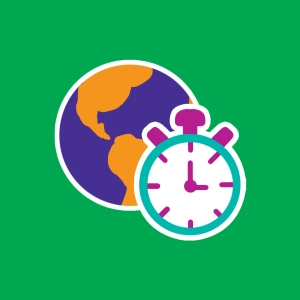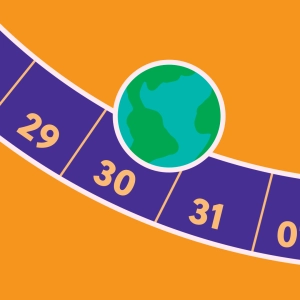 Time Zones
Time Zones
Learning objectives
- To justify the necessity of not having the same time everywhere on Earth.
- To understand that there are several local times on Earth.
- To understand that everyone in the same time zone is at the same time.
- To identify one’s own time zone.
How do we facilitate communication between two far apart populations that do not have the same time ?
In the age of the Internet and mass tourism, this question is omnipresent and the manipulation of time discrepancies is part of our daily lives.
But a quick look back shows us that these considerations are only recent.
Until 1890, the majority of European cities used their own “local time”, calculated according to the position of the Sun. Not only did London and Paris not have the same time, but, within the same country, Strasbourg and Paris or Chicago and Atlanta didn’t have the same time either. Still today, the clock of Bristol (England) has two minute hands in order to distinguish the historical time in Bristol from that in London.
The principle of time zones, the creation of which is accredited to the Canadian Fleming in 1879, planned, logically, 24 zones. In reality, there are 40 time zones, which shows that the adoption of a local time is more complicated than it seems.

Discover EduMedia for free
The interactive encyclopedia that brings science and math to life in the classroom.
Over 1,000 resources





